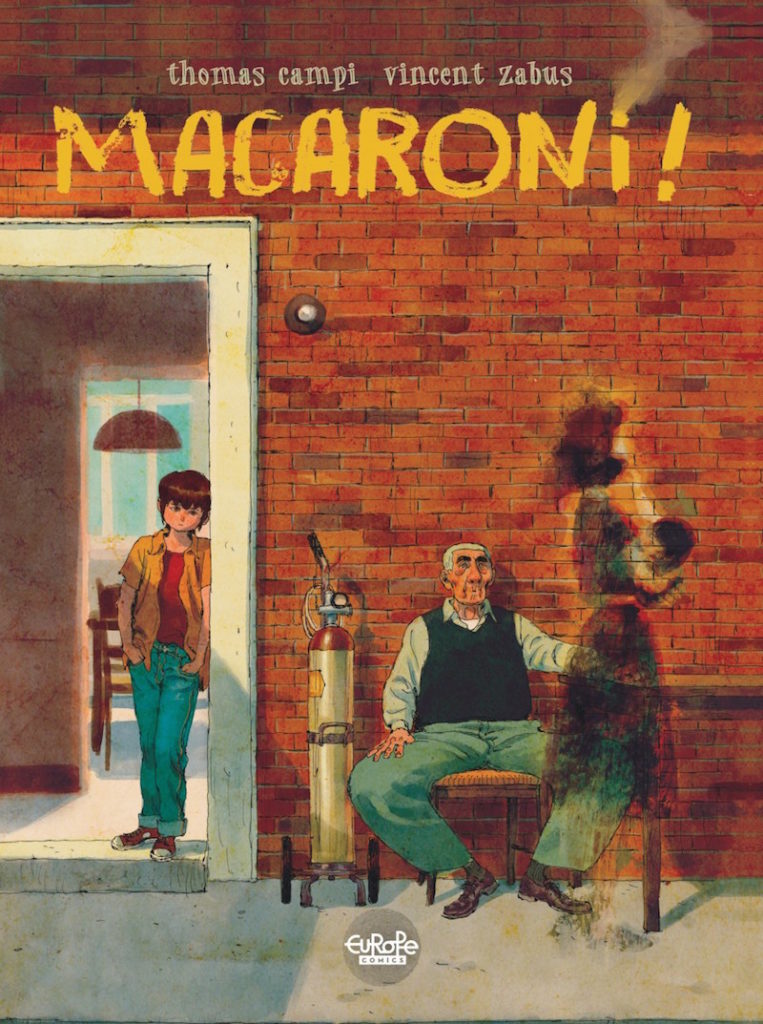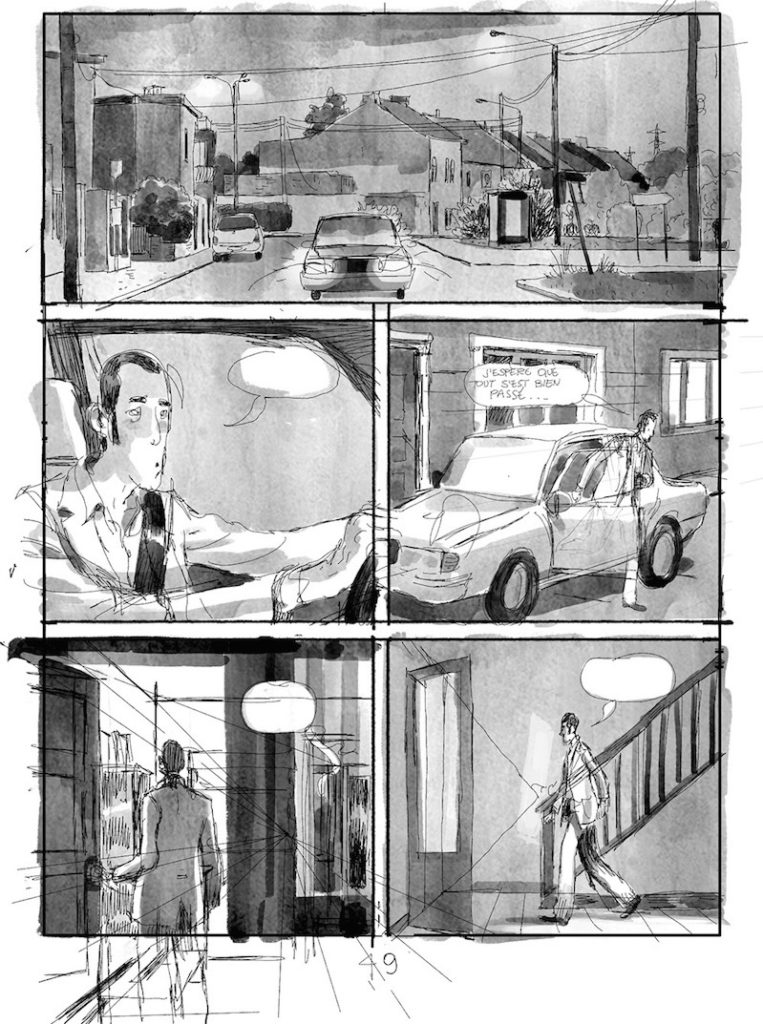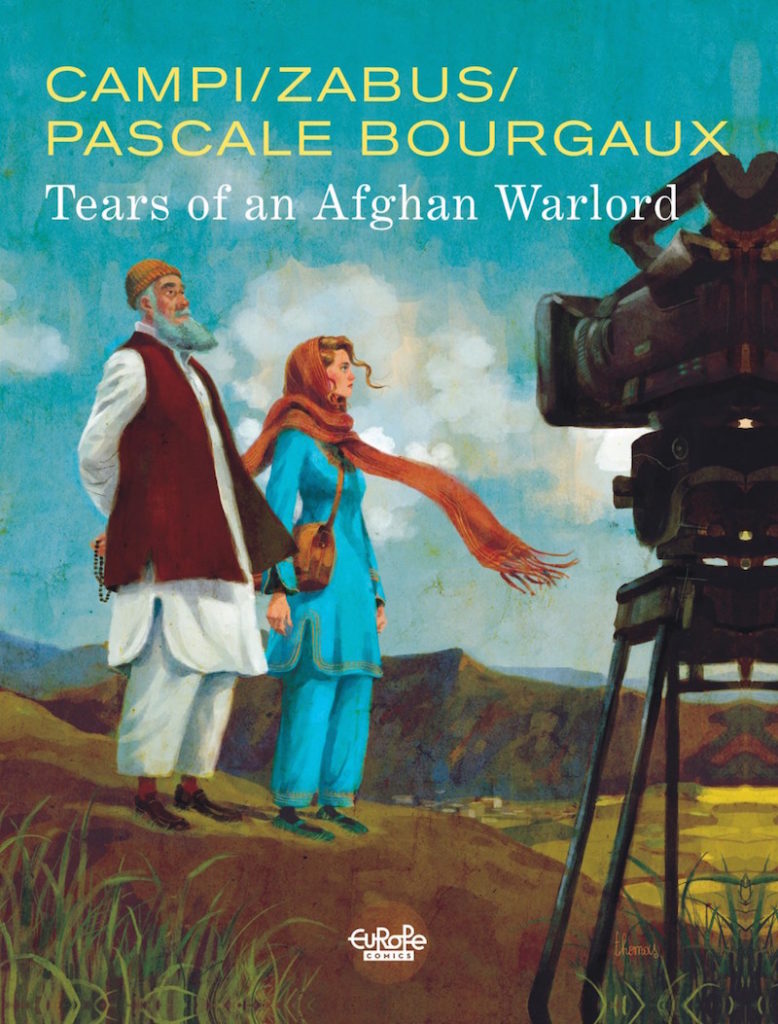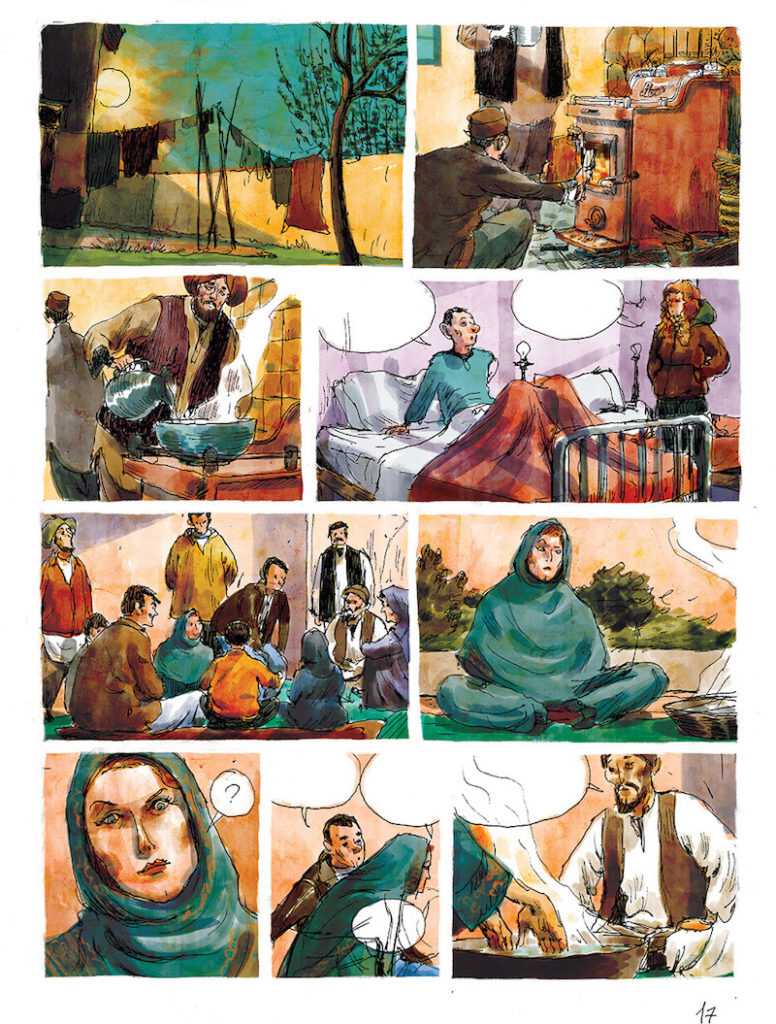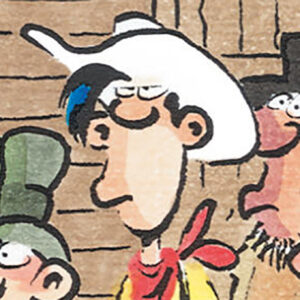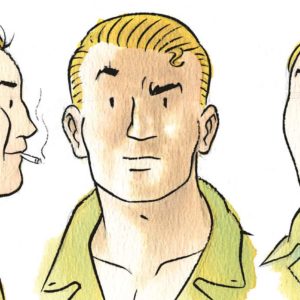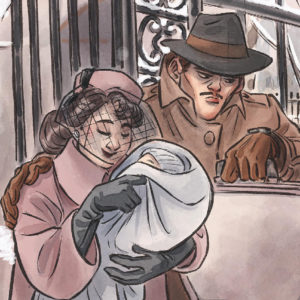This month award-winning Italian artist Thomas Campi is joining Europe Comics in New Orleans for the ALA Annual Conference, where he is promoting Macaroni! and Tears of an Afghan Warlord from the Europe Comics collection, Magritte: This is Not a Biography (published in English by SelfMadeHero), as well as his latest book – The Joe Shuster Story: The Artist Behind Superman – published in English by Papercutz (NBM Graphic Novels). After ALA Annual, Thomas will fly to New York for a signing tour around New York bookshops. We’ve caught up with Thomas to find out more about his work.
How did you decide to become a comics artist? How did you achieve this goal?
I’ve been drawing all my life, probably because both my grandpa and my dad are artists. When I was a kid I was amazed by my dad’s drawings and their magic, but I never thought about being a professional artist. Even when I was studying in art school, I was only planning on becoming an architect, until one day in early summer 1993, when I saw my first comic exhibition. That day, walking around a deconsecrated and restored church, there was original comic artwork on display, from several Italian artists, some of which later became my mentors, like Germano Bonazzi and shortly after Roberto Zaghi, both from my hometown Ferrara. Standing there looking at those beautifully inked black and white pages made me realize what I already knew, though with no real awareness yet, that comics are a wonderful form of visual art, that a comic page can be framed, that these are drawings with life, and most of all that a normal person could do that. I clearly remember feeling a fire inside me, an inner force that started leading toward the dream of becoming a comic artist, a fire that I still have, maybe even stronger than before.
I started making a zine with a bunch of friends, and we published comics, short stories, poetry and illustrations. I did a few short stories and a couple of covers, one of them in watercolor. The local comic shop was selling our zine and one day, while I was there buying my weekly “dose” of comics, Germano Bonazzi (a professional artist working for Bonelli Editore, the biggest publisher in Italy) entered the shop. The owner, who was a friend of mine, showed him my cover, saying that I was there in the shop. Germano kindly complimented me and invited me to visit his studio as soon as I had new drawings so he could give me feedback and suggestions. I was drawing all day, and lots of nights, and every 10 days or so I would visit him to show him my work, until one day he surprised me with the keys to the studio. I was young and determined, and I promised myself that if in a year and a half I hadn’t become good enough to be a professional then I would just focus all my effort on becoming an architect. I spent every day in the studio with Germano and Roberto Zaghi, who checked my progress during breaks, giving me direction on anatomy, perspective and pretty much everything, often retracing my drawings showing what I did wrong. They became my mentors and my best friends. Thanks to them, it happened that in a bit more than 18 months, I got a call for my first professional comic gig, for Julia, a series by Giancarlo Berardi, published by Bonelli.
Which other artists inspire you?
Inspiration is something that comes from everywhere, movies, music, paintings, and of course comics. Some of the artists that probably had a big influence on me, both in my drawing style and technique and in my perception of what comic art is, are Lorenzo Mattotti, Nicolas De Crécy, Pascal Rabaté, Moebius, Magritte, Edward Hopper, and Ronald Searle, to just name a few.
As for movies, I would mention Jean-Pierre Jeunet, Patrice Leconte, Claude Chabrol, and Alfred Hitchcock, but there the list is too long.
Who would you consider to be your role model?
To be honest I don’t have one single role model, there are many people that have taught me a lot about art and life: my parents, with their support and by teaching me what sacrifice and respect is; my grandma who showed me what being strong and resilient really means; Germano Bonazzi and Roberto Zaghi, who mentored my teenage mind and spirit by teaching me about drawing and comics, but also about music and movies; Renzo Prudenziato, a professor of Italian literature and friend, who showed me how to stay always genuine, even when you have incredibly immense knowledge like he does.
There are two titles illustrated by you in the Europe Comics collection – Macaroni! and Tears of an Afghan Warlord. Could you tell us about the creative process behind these?
They’re very different. Tears of an Afghan Warlord is a true story, a moment in the life of Pascale Bourgaux as a reporter in post-Taliban Afghanistan. It was written by her in collaboration with Vincent Zabus. It was a great opportunity for me to study and try to understand a bit more about the Middle East, about the burka, the hijab and the dynamics of a small village in Afghanistan. I went to Paris and spent a few days with Pascale, watching raw footage of her time there as a reporter, I tried putting on a burqa, and walked around the apartment for a few minutes, which was a very unique and strong experience. Once we all had a clearer idea about the book we started working. I sent the storyboards to both Pascale and Vincent, we discussed the narration, if it was flowing or not, and then I made the final pages.
For Macaroni! the process was slightly different, mostly in terms of mindset and the mood of the story. Vincent explained the story to me, and as always we discussed it by bringing together our own points of view and ideas, especially regarding the memories of Ottavio and how to treat them visually. He suggested cracked paintings, and I sketched some sort of ghosts and the memories coming out as smoke from Ottavio’s head. Working with Vincent is always exciting, we tend to keep working on the story till the very end, by adding and changing things while we work — it’s a real work in progress. As always, I did the composition of each page straight with pen on paper, then scanned and printed them in a bigger size and inked on paper laid over them, using a lightbox. Once the inking was done I scanned the page and did the coloring digitally.
Which of the two titles is closer to your heart? Why?
Macaroni! I really felt that story. Ottavio, the grandpa, reminded me of my grandma who emigrated to Brazil and told me a lot of stories about the Second World War, so when I was drawing him it was like keeping alive my memories of her. It might sound silly, but when I was drawing Ottavio and Romeo it was like connecting with real people, like they were somehow friends.
